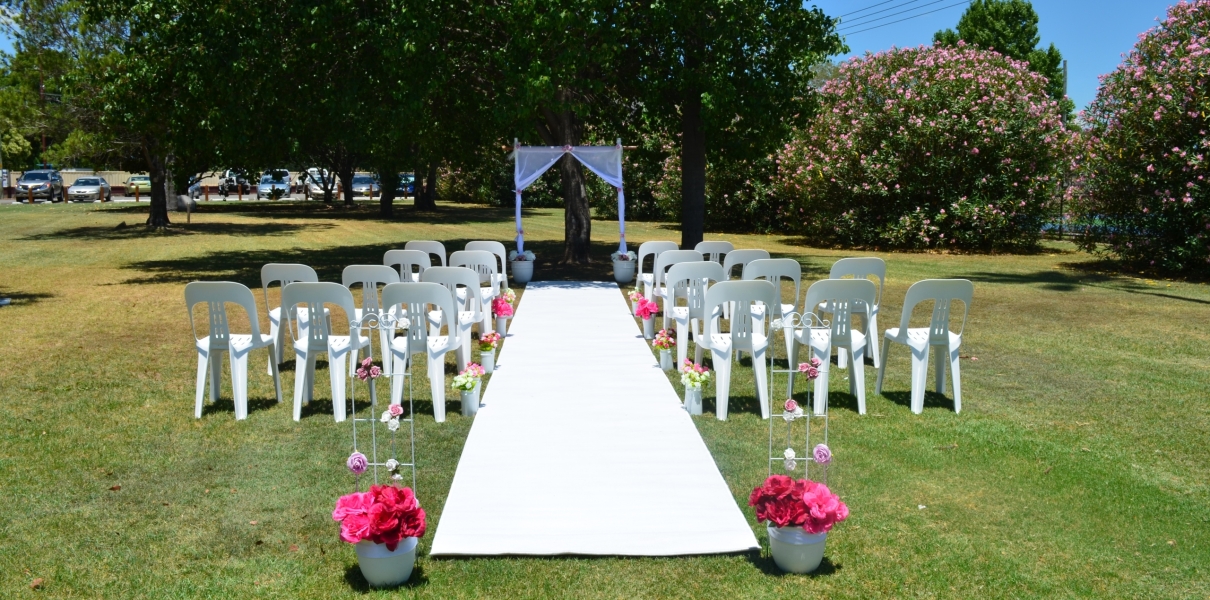Most couples want a wedding ceremony that speaks to their unique values, beliefs and life circumstances, but beyond a few inspired ideas, many are at a loss about how to put it all together. Having designed and officiated at hundreds of wedding ceremonies, here are my 10 top secrets to creating the ceremony of your dreams:
1) Remember that the ceremony is a sacred ritual and the most important part of your wedding day.
The marriage ceremony is rich with traditions that cross cultural boundaries and date back to ancient times. If a contemporary marriage ceremony does not include this sacred dimension, it runs the risk of being little more than the creation of a legal union. Like digging a well to tap into the aquifer, a ceremony that draws upon the sacred dimension connects a couple into the mystery of two becoming.
2) The wedding ceremony is a theatrical production and you are the producers/directors.
A seamless wedding ceremony is a carefully choreographed production. This theatrical dimension requires balancing the creation of a meaningful ceremony with careful attention to the details. Thinking everything through ahead of time and having a thorough rehearsal allows the members of the wedding party to confidently perform their parts, which will make the ceremony appear effortless to your guests.
It’s important that you take charge. If you have advisors, let them guide you through what decisions need to be made and what your alternatives are, but don’t let them make decisions for you. Even when you have a bridal consultant, be sure that all decisions affecting the ceremony are made by you.
3) A great ceremony strikes a balance between personal expression and tradition.
The rules governing the content of a wedding ceremony are those of the church and state. Religious traditions have their own specific way of performing the wedding ceremony and may not be open to the idea of personalizing the ceremony for individual couples. State laws specify such things as the minimum age for brides and grooms, the need for a qualified officiant, and the speaking of vows in front of witnesses.
When a couple is getting married outside the auspices of a particular religious tradition, they are free to customize their ceremony as long as they honor the laws of the state where they are getting married.
Creating a wonderful ceremony is a matter of balancing the opportunity for expressing your uniqueness with the comfort of the common ground of tradition. Going too far in one direction or the other creates a ceremony that is memorable for all the wrong reasons.
Be careful not to throw away all the elements of tradition. For example, when presenting ceremonial elements in my book, “The Wedding Ceremony Planner,” I chose to loosely follow the structure of the wedding ceremony found in the Book of Common Prayer, since eighty percent of Americans are Christian. That is why this common root of Christian wedding ceremonies is so familiar to most people. It also provides a logical sequence of events that allows the ceremony to reach crescendo with the sharing of vows, the ring exchange, the final blessing, pronouncement, and the kiss. I recommend that couples put their signature on their ceremony in the content of the elements they choose to include rather than in their sequencing.
4) Make sure you and your ceremony officiant have a comfortable working relationship.
The role of the officiant in a traditional religious ceremony is governed in large part by the rules of that religion, while interfaith and ecumenical ministers have much more freedom to customize your ceremony with you. Remember that you get to choose who marries you, and it is very important that you have a comfortable working relationship with him or her. Our job as clergy is to guide you and to serve you, and some of us do a better job of that than others.
It is not uncommon for couples to be intimidated by members of the clergy. We have personalities, and strengths and weaknesses in how we perform our jobs, just like everyone else. You are entitled to an officiant who cares about you and wants to help you to create the wedding ceremony that is right for you, even if it means he or she needs to go above and beyond the call of duty.
5) Allow your ceremony to be unique, but not a cliché.
Some couples try too hard to be unique, and end up including elements in their ceremony that are either disappointing, cliché or offensive to some of their guests. For example, one couple planned to have butterflies released during their recessional. Unfortunately, when the cardboard containers were opened, half the butterflies were dead. At another wedding, the groom, accompanied by his rock band, played a song for his bride in the middle of the ceremony. This mini jam session left many traditional guests horrified.
6) Be very clear about the time and location of your ceremony.
Some people believe that weddings never start on time. However, most couples plan the time of their reception based upon the assumption that their ceremony will start on time. Remember, the later your ceremony starts, the more time and money you will lose on your reception. It is a good idea to either be clear that your ceremony will start on time, or build in a time cushion by scheduling the start time fifteen minutes before you actually plan to begin. Just be careful not to put those who arrive on time in the position of having to wait too long.
Similarly, it is important to give your guests clear information about your ceremony location. Some couples choose locations that are aerobically challenging or simply inaccessible to elderly or physically challenged guests — including women in high heels. Be sure to include an excellent map and directions with your invitations. Also, strategically place signs, balloons or ushers to guide your guests to the wedding site. Another good idea is to provide the cell phone number of someone willing to serve as a contact person for guests who get delayed or lost. Give your family and friends the gift of a ceremony that starts on time, at a user-friendly, easy to reach site.
7) Keep it short and simple.
You can create a beautiful and memorable ceremony that takes no more than 15 or 20 minutes. In my experience, a ceremony that goes much longer than that runs the risk of creating fidgety, bored, and impatient guests. For example, you may lose the attention of your guests by including more than two readings.
8) Just breathe. Be present. Be joyful.
Your wedding ceremony is when you will first see all of your guests and they will see you. This may be a bit overwhelming or anxiety producing. I have seen many a couple come before me with terrified smiles on their faces and no air moving through their bodies. That’s when I remind them “Just breathe.” It is so simple, yet sometimes challenging for a couple to let go of all concerns so they can bring their hearts and minds present. Once they get to the altar, all the bride and groom really need to do is to look into the eyes of their beloved and just breathe and feel the joy in their hearts. What a magnificent moment in life and what a shame to miss it because you are worrying about some detail or find yourself overcome with nerves.
The greatest gift you can give yourself and each other on your wedding day is to be fully present in the loving that brought you both to this moment. You can only focus your attention on one thing at a time. So, let it be the joy, loving, and gratitude you feel to be joining together in marriage, rather than worrying about whether or not the caterer got your message about the olives. Just be fully present in your loving.
9) Remember that your wedding day has only 24 hours.
While this is one of the most important days of your life, it only has 24 hours like any other day and will come and go before you know it. The more you obsess about your wedding, the less you are likely to enjoy it. Have fun planning your special day, but don’t fall into the trap of trying to make it the most perfect and spectacular wedding that has ever existed on planet earth.
Enjoy discovering and expressing what aspects of your wedding day are truly important to the two of you as individuals and as a couple. Just remember, this is not an Olympic event. It is the celebration of your commitment to each other and the beginning of your journey together as husband and wife. Have a heartfelt and delightful day.
Don’t set yourselves up for disappointment by buying into unrealistic expectations and then falling into post-wedding depression because the day has passed and you are no longer the king and queen for the day. Your wedding day is meant to be a gathering of loved ones to witness and celebrate your union and to launch you into your life together as husband and wife. That brief 15 or 20 minutes called your wedding ceremony is what the day is all about — your entrance into the sacred and joyous covenant of marriage. Then you party, and then you have the rest of your lives together to fulfill your vows by loving, honoring, and cherishing each other.
10) Delegate, have fun, and keep your sense of humor.
Do plan ahead, paying careful attention to the details, and delegate implementation of your wishes to friends, family, and professionals. Once you have set your plans in motion, let them go. Do not carry them with you throughout your wedding day, comparing what actually happens to what was on your list. What you planned for was your image of perfection, which never actually happens. Remember to keep your sense of humor handy and to enjoy the serendipity as it unfolds. Be open to the unexpected blessings and surprises that are sure to come your way. May you and your marriage be blessed in all ways, always.
If you would like to know more about me and my work, please explore my website here.
Also, if you know anyone who might get value from this article please email or retweet it or share it on Facebook.






